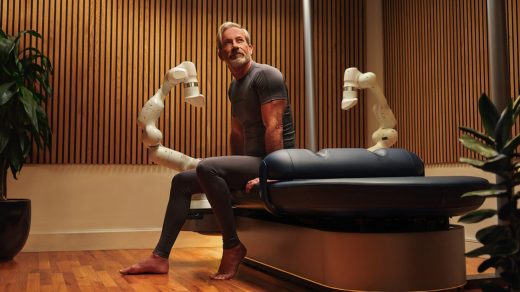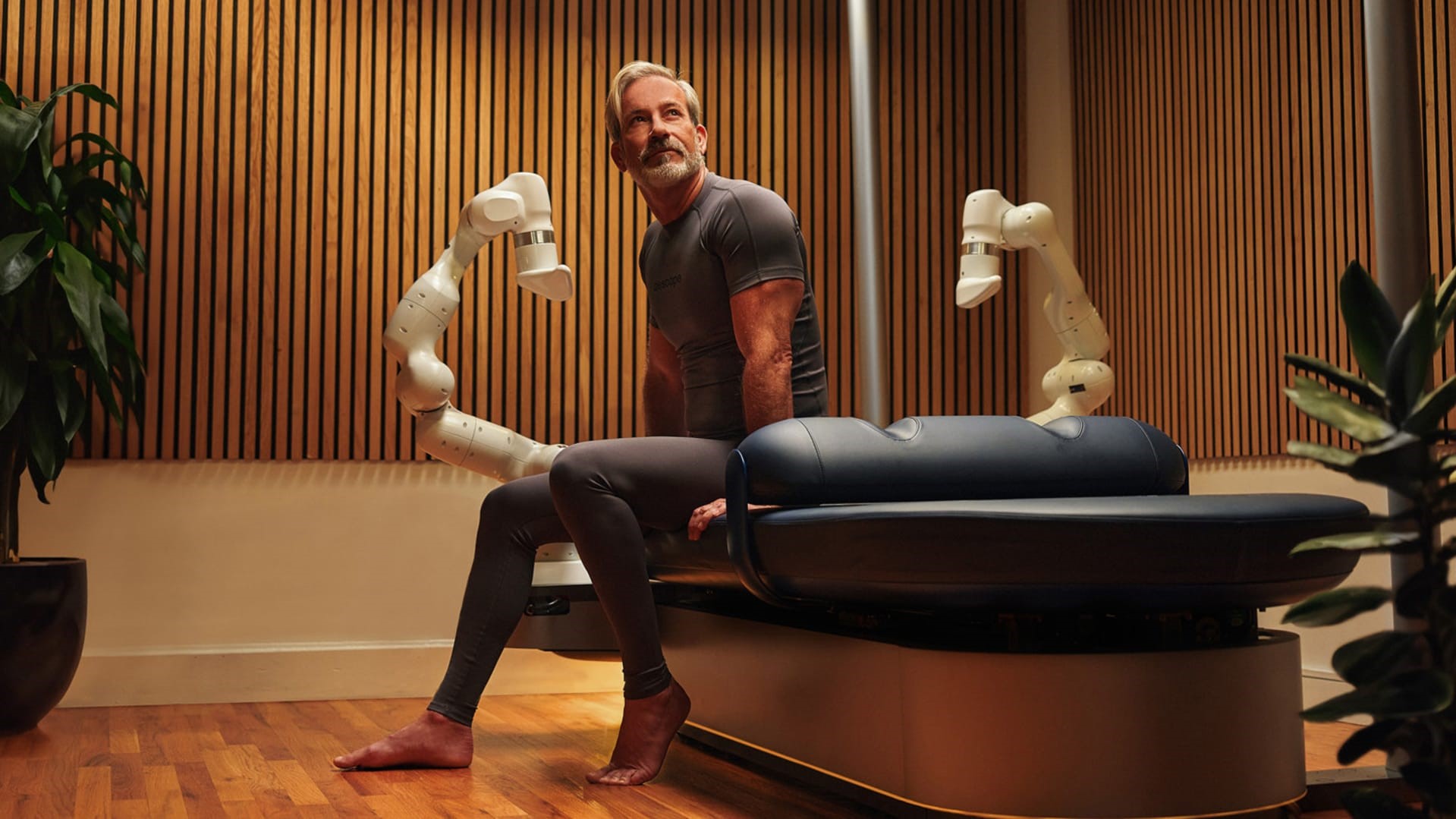How Amazon and Uber alums designed this new high-tech massage machine to feel undeniably human-like
How Amazon and Uber alums designed this new high-tech massage machine to feel undeniably human-like
Aescape’s robotic masseuse uses AI to give personalized massages.
A couple of weeks ago I got a massage. In a warmly lit, clean space—quiet aside from the ambient classical music playing in the background—I laid on a table and relaxed for 30 minutes as my massage therapist went through the usual routine of stretching tight muscles, relieving pressure, and working on knots in problem areas on my upper, middle, and lower back, followed by hips and glutes. The difference from my previous massage experiences, however, was that all of this was done by a robot.
Designed to bring people on-demand, hyper-personalizable massages, Aescape (pronounced “escape”) is launching its massage table across 10 Equinox locations in June. Soon, the AI-powered machine will be available across the hospitality industry, including in hotels, spas, country clubs, gyms, and even professional and collegiate sports teams. With $80 million in funding, the company, which was founded by alumni of Apple, Meta, Amazon, and Uber, has investors including Valor Equity Partners (an early investor in SpaceX and Tesla), Crosslink Capital, Alleycorp, and NBA athletes such as Kevin Love.
The idea for the company “literally came from a personal pain point,” says Eric Litman, CEO and founder of Aescape. “I had a chronic issue in my neck and needed a massage every day of my life for about eight months, or I couldn’t turn my head to the side. All I ever really wanted was just an elbow right [on my neck] for about an hour, just to make it through to the next day.” Litman eventually found out the issue was a bulging disc, but at the time, “I didn’t know that was the problem. I just knew I was in horrible pain and didn’t have time to figure it out.”
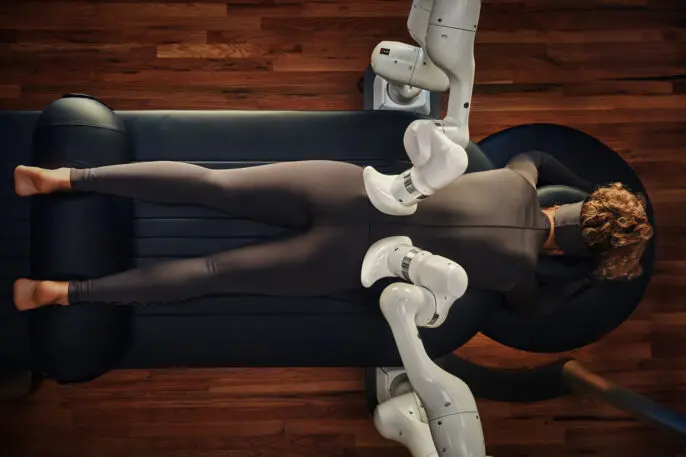
Litman, who was traveling frequently at the time, tried massage therapists “everywhere on the planet you can imagine.” He says that although massage therapists were always well intentioned, they almost never did exactly what he wanted. While on the phone with a friend one day voicing his complaints, Litman joked that he wished he could just automate the entire massage industry. “It turned out that as crazy as the idea was, other people wanted that same product,” he says.

Six and a half years later, Aescape is now offering 30 minute massages that can be personalized through customizable features. Users can choose their music, adjust the leg, neck, and arm rests for comfort, and they can specify the amount of pressure they want to feel from the robot’s “Aerpoints,” which feel almost eerily similar to human hands and elbows.
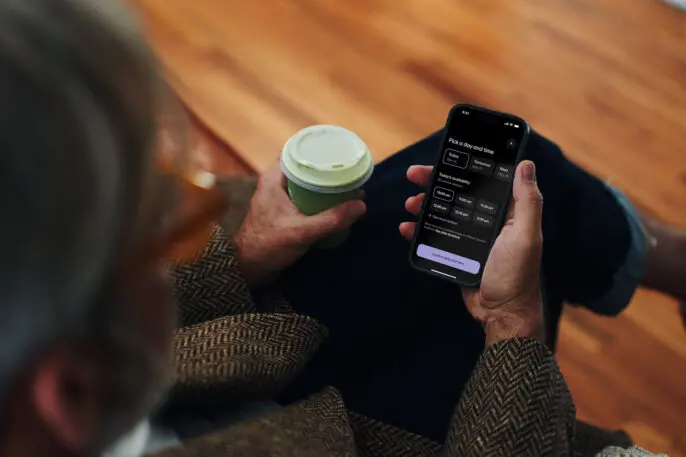
Built to resemble the shape your body would make if you bent your arm backward to touch your shoulder, the Aerpoints are designed with seven “precision-crafted surfaces” that mimic the pressure and feel of a human massage therapists’ hands, knuckles, thumbs, and elbows. Massage therapists worked with the company to inform how the robot moves across the body, the order in which it executes certain movements, as well as how it should warm up and cool down muscles.
In order for the robot to accurately customize a massage, the machine takes a 3D scan of the body, which the company says captures over 1 million data points in a matter of seconds to map a body’s position on the massage table.
Aescape is meant to be easily accessible and on-demand—Litman compares the app-based booking experience to Resy or Uber. And indeed, it is a tech-forward experience. Inside the room, I controlled my massage through a screen that sits below the headrest. This screen shows what areas of your body the Aerpoints are working on, what section of the massage you’re experiencing, and how much time is dedicated to each section. If you’d rather not be aware of any numbers, you can opt for an immersive visual experience like rain falling on a forest or snow drifting upon a meadow.
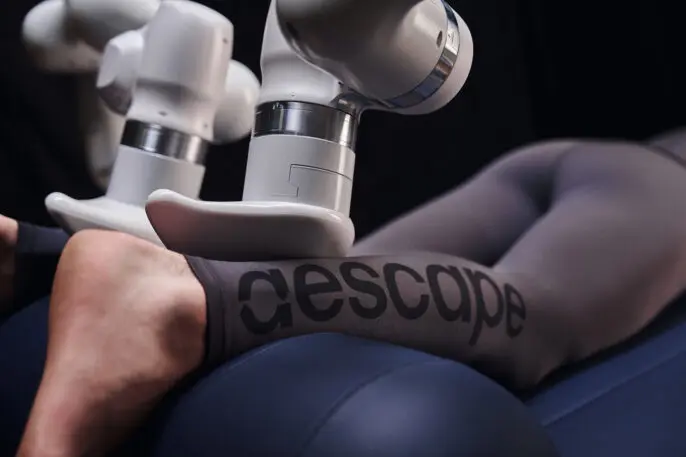
Like other robotic massages, the Aescape doesn’t require oil or lotion, or the need for a shower afterwards. To prevent friction, the company developed “Aerwear,” a slim-fitting long-sleeved top and leggings made from technical fabric that users should change into before their massage. Much like the robes provided to patrons of a spa, Litman says the venues using Aescape will be responsible for laundering Aerwear, though the eventual hope is that customers will have the option to purchase their own.
As Aescape rolls out its beta testing, Litman says there are a few features users can expect in the future. Eventually, the robot will be able to tailor the massage on specific parts of the body, where someone will be able to tell the app “I have a shoulder issue,” or “I only want my lower back worked on today.” Another option will be “mission specific” massages—for example, someone training for a marathon may want to do four sessions specified to the needs of a long-distance runner. There’s even the possibility of expanding into celebrity content, like “your favorite rockstar’s post-show massage,” Litman says.
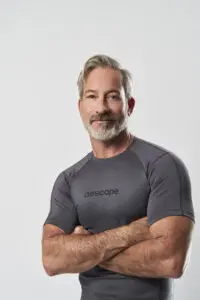
“As the person who founded this company specifically to solve a need, [the ability to work on specific areas of the body is] the feature I want the most,” he says. Litman expects the feature to debut sometime this year.
Litman says Aescape’s goal is not to replace massage therapists, but rather to act as a complement to a space that he says is drastically underserved. The massage industry, valued at $19 billion in 2023, is experiencing a shortage of roughly 29,000 workers. Aescape is increasing that accessibility, he says, noting that currently it’s difficult to get a massage on demand.
“We are not going to rub your scalp or do mud treatments or seaweed wraps, or build this sort of personal relationship that carries and lasts from treatment to treatment with a therapist,” Litman says. “What we are focused on is delivering [a] really great therapeutic massage on demand when you want it . . . and personalized to the way you like to think about a treatment.”
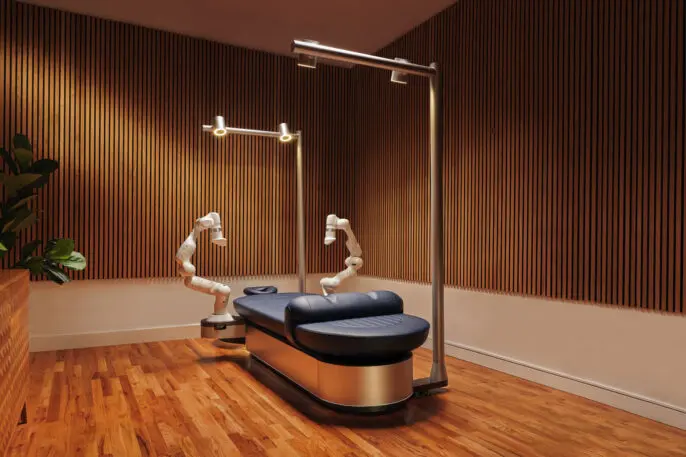
Aescape is renting out the machine to its partners for $7,000 a month—roughly the cost of a good massage therapist, according to Litman. Customers can expect to pay a base rate of $60 for a 30 minute massage, though prices will vary depending on where the massage is being offered and what additional services a venue provides. Because the robot is built on AI and connected to an app, it will remember people from treatment to treatment.
“Whether you show up at a local Equinox or at a hotel on vacation, your profile’s there, it knows you and knows what you like,” Litman says. “And ideally, over time, you dial it in and set your preferences and we learn from you so that it just consistently gets better.” Plus, he jokes, you don’t have to tip.
ABOUT THE AUTHOR
(18)

